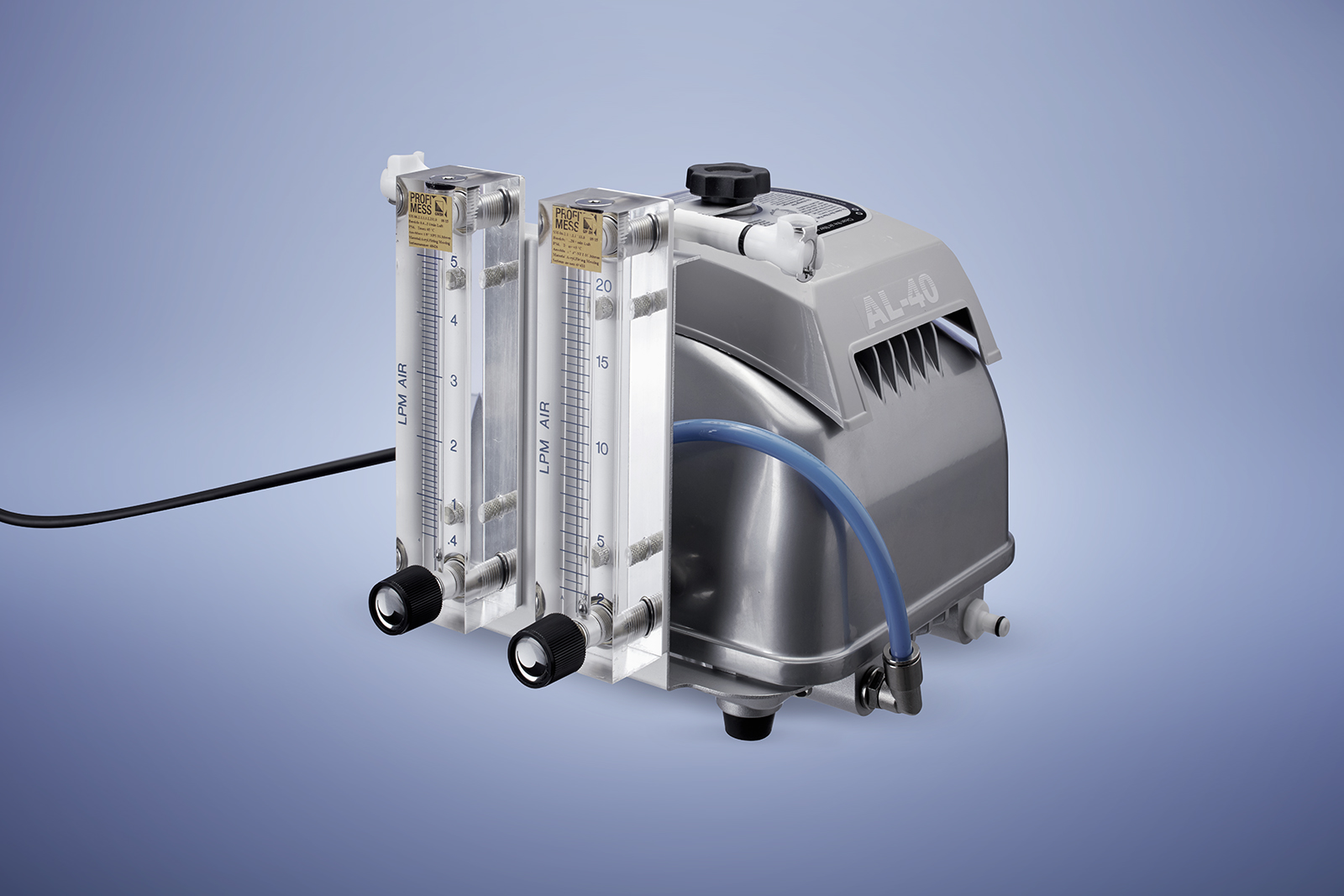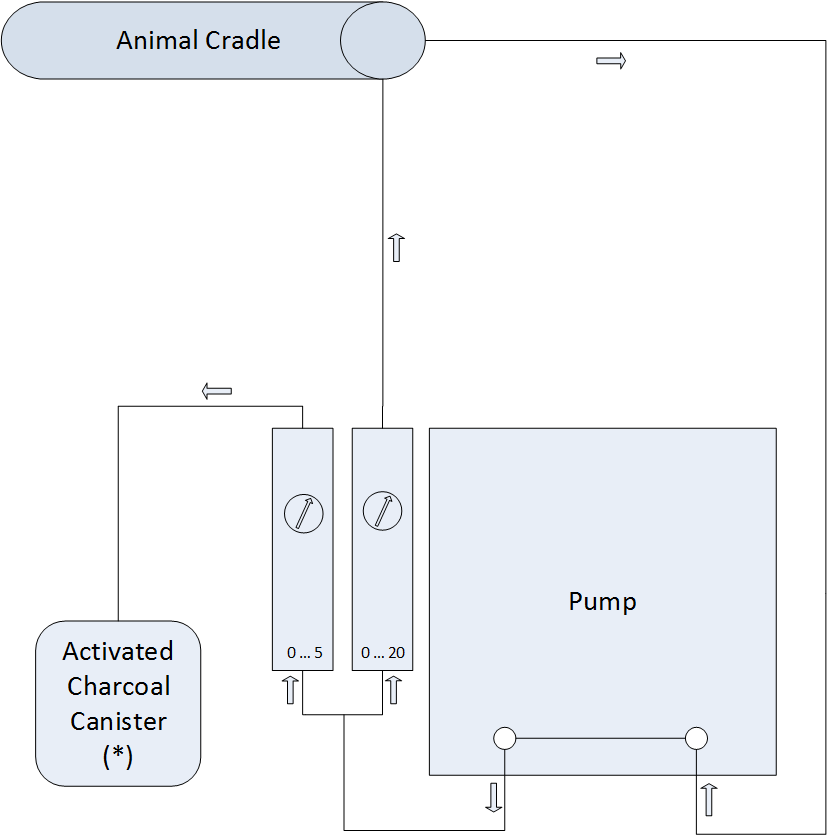Air Circulation System
MMACs in combination with the instrument adapter provide hose connections to be used as warm air in- and outlet. This allows on one side to regulate the temperature in the animal chamber but also serves to extract air potentially enriched with anesthesia gas (WAG waste anesthetic gas).
For Bruker BioSpin MR Instruments, we recommended a closed Air Circulation System (Option Air Supply & Gas Removal Pump, Bruker P/N T155907 (230V) or T157336 (110V)) with anesthesia extraction to an activated charcoal adsorber (* not part of the delivery). Air flow to the animal chamber as well as the amount of air removed to the WAG adsorber can be regulated.
Air Circulation System (Option Air Supply & Gas Removal Pump).
Sketch showing the Air Circulation System (Option Air Supply & Gas Removal Pump). It consists of a diaphragm pump, corresponding hoses, adjustable flow valves with meters for both, the closed air flow circuit to the animal chamber and the extraction pathway to an activated charcoal container *. The air flow to the MMAC can be regulated from 0 to 20 lpm and the flow to the activated charcoal canister from 0 to 5 lpm.
Animal Temperature Stabilization
The hoses of the water based heating unit called Body Temperature Conditioning System (Option) can be connected to the ICON and BioSpec Adapter. In combination with the Air Circulation System (Option), the water/air heat exchanger located within the ICON and BioSpec Adapter allows temperature stabilization of the animal in the cassette.
| Recommendation: A typical installation of the Body Temperature Conditioning System consists of 2x 6 meter water hoses and 2x 10 m air hoses between the water bath and ICON/BioSpec adapter. A water bath temperature of 52 – 58 degree Celsius in combination with 8 liter/min. air flow to the water/air heat exchanger in the adapter is recommended for adequate animal body temperature stabilization. Extraction of 2 liter/min. air from the closed air circuit to the activated charcoal container is recommended when anesthesia gas is supplied to the cassette. |
| | |
Health hazard by anesthesia gas above regulatory limits (worker protection) Compliance with occupational safety and health regulations are in the responsibility of the System Owner (responsible body). Acute exposure to Isoflurane as well as chronic exposure can cause health hazard. - 1.
- Anesthesia gas delivered into the instrument can escape.
- •
- Use corresponding air suction in the surrounding enclosure where applicable.
- •
- Use Waste Anesthetic Gas suction from the anesthesia mask where applicable.
- •
- Operate instrument in a room with sufficient air exchange rate.
- •
- To ensure safe and adequate handling of anesthesia, only trained and authorized users may work with anesthesia gas. Repeat training on a regular base.
- •
- Check residual anesthesia gas concentration to stay within worker protection regulatory limits (for example using regularly gas personal monitors suitable for Isoflurane detection).
|
| |
Death of or harm to the animal - 1.
- The Bruker instrument is often used in combination with anesthesia devices (Trade Products) that deliver anesthesia gas. Overdose of anesthesia gas might cause the death of the animal. It is in the operators responsibility to monitor vital signs of the animal.
- •
- We recommend to use an animal monitoring system to monitor vital signs (for example heart rate, respiratory rate, body temperature, …).
- •
- Follow the instructions for use of all device suppliers such as for example the anesthesia device or animal monitoring trade product supplier.
- •
- Ensure operation of vital signs when preparing the experimental setup. For example check ECG wires and hoses of respiratory air pressure pad for blockade.
|
| |
Death of or harm to the animal - 1.
- During anesthesia, animal body temperature stabilization needs to be fulfilled. We recommend to use a heating device supplying warm air to the air diffusor in the MMAC to support the body temperature.
- •
- As warm air supply, we recommend the temperatures and the air flow rates given in the text.
- •
- Select a device that supports the recommendation.
- •
- Follow the instructions for use of the heating device supplier.
|
Further information
- •
- First Time Use





